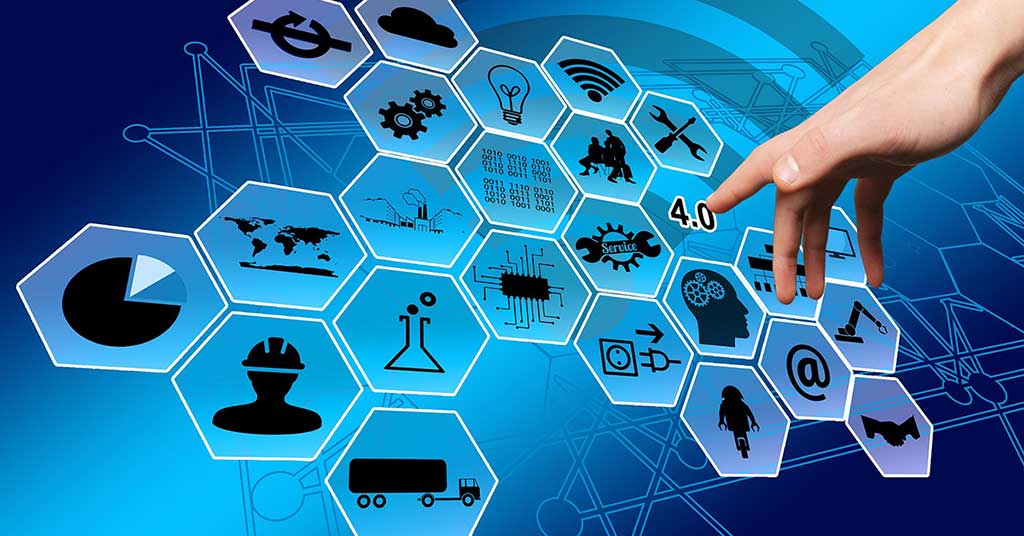 Ever wonder what technology components underlie the Internet of Things (IoT)? As the explosion of IoT continues, understanding the technology components of IoT becomes vital to business success. Here’s a quick overview that should help you make more informed technology choices when implementing IoT for business value.
Ever wonder what technology components underlie the Internet of Things (IoT)? As the explosion of IoT continues, understanding the technology components of IoT becomes vital to business success. Here’s a quick overview that should help you make more informed technology choices when implementing IoT for business value.
IoT devices, typically sensors, continue to decrease in size, power consumption, and cost. At the same time, IoT devices are increasing in telecommunications and data processing capability. For examples of consumer IoT devices, look at the Nest Labs website. Click here for an overview of business IoT applications.
In the future, we can expect IoT devices to co-operate more, even across companies, as store-and-forward communication devices. This capability will reduce today’s high data-gathering cost.
These IoT device advances will make ever more ambitious IoT applications possible.
 |
| Related Stories |
| Living and working in a 6G world
|
| Internet of things will sow a bumper crop on farms
|
| We must manage the Internet of things with care |
Networks
Local Area Networks (LAN) are becoming faster, more resilient, and more sophisticated in their management features. Wi-Fi has become ubiquitous. The available technologies for Wide Area Networks (WAN) are increasing. Cellular telephone networks are being upgraded to 5G for faster speeds and more capacity. More and more fibre optic cables are being strung across the planet. Satellite communication is becoming easier to use and more cost-effective.
These network technology advances make it possible for businesses and governments to collect detailed data from the rapidly increasing number of IoT devices scattered across the planet at a cost-effective price.
Data Analytics
IoT data is labelled Big Data because it is so voluminous. The colossal volume makes IoT data useless without data analytics software to summarize and display it.
Leading data analytics software development tools include IBM Watson, Microsoft Power BI, Qlik Sense, SAS Viya, Salesforce Tableau, and Tibco Spotfire.
In the future, expect data analytics to emphasize data exploration and expect data exploration to become more autonomous as Artificial Intelligence (AI) is introduced into data analytics software.
Computing power
General-purpose processor chips are increasing in computing power without increasing in price. These chips provide plenty of power to process the torrents of IoT data rushing into data centers.
Older processor chips are falling in price and offer more than enough processing power for many IoT applications that collect, crunch and present data.
These computing power advances mean that ever more ambitious IoT applications are becoming possible.
Co-processors
Field-Programmable Gate Arrays (FPGAs) and Graphics Processing Units (GPUs) provide high performance to computationally intensive systems. Co-processors offer higher performance per Watt for specialized instruction sets than general-purpose processor chips. A good example is the specialized chips Google designed and built for voice recognition on Android smartphones and personal assistants.
These co-processors significantly reduce the elapsed time and cost required to process and summarize the large volumes of time-series data that IoT devices typically generate.
Memory
The cost of memory for computing is continuing to decrease. The low price makes it possible to add at least some memory to even the smallest, cheapest IoT devices to retain more data.
Low-cost memory enables a store-and-forward approach to communicating the IoT data to a central data center for storage and processing. Store-and-forward reduces the need for a more expensive, highly available network to gather the IoT data when IoT devices have no memory.
These memory cost reductions mean that ever more capable IoT devices can be deployed at decreasing cost.
Storage
The cost of disk and tape storage is continuing to decrease. The low price makes it possible to keep the large volume of detailed data that IoT devices generate indefinitely.
Some companies summarize IoT data to contain the growth of storage. Others recognize that IoT data is emerging as a strategic dataset that confers a competitive advantage to its owner.
These storage cost reductions mean companies can err on the side of caution and keep as much IoT data as possible.
Database Management Systems
Advanced database management systems (DBMS) are required to manage the large volume of detailed data that IoT devices typically generate.
Examples of large DBMSs include:
- SQL: IBM DB2, Microsoft SQL Server, Oracle Database.
- NoSQL: Apache Spark, MongoDB, Apache Cassandra.
These DBMS advances make it possible to manage and retrieve large volumes of IoT data at high speed and an acceptable price.
Application development tools
To derive value from IoT data requires an IoT application that analyzes and presents the data in a form useful for decision-making. IoT applications are typically custom applications that are developed using application development tools.
Examples of leading application development tools suited for the job include R and Python.
Cloud services
If thinking about all these technology components associated with IoT gives you a headache, you can outsource significant parts of your IoT initiative to a cloud service provider. Amazon AWS, Google CloudPlatform, IBM Cloud, and Microsoft Azure are major players.
The significant advantages of outsourcing to the cloud include the following:
- Little or no capital is required for the computing infrastructure.
- Outsourcing all the operation work, including updating and patching the computing infrastructure. That is a significant distraction for many organizations.
- Access to advanced data management and AI software functionality that would be prohibitively costly to build and maintain for one organization.
- Access to a secure computing environment that reduces the risk of cybersecurity incidents.
These cloud service advances make it possible to reduce the time to value from IoT applications. A shorter time to value can mean the difference between a breakthrough product or an also-ran offering.
Yogi Schulz has over 40 years of information technology experience in various industries. Yogi works extensively in the petroleum industry. He manages projects that arise from changes in business requirements, the need to leverage technology opportunities, and mergers. His specialties include IT strategy, web strategy and project management.
For interview requests, click here.
The opinions expressed by our columnists and contributors are theirs alone and do not inherently or expressly reflect the views of our publication.
© Troy Media
Troy Media is an editorial content provider to media outlets and its own hosted community news outlets across Canada.

